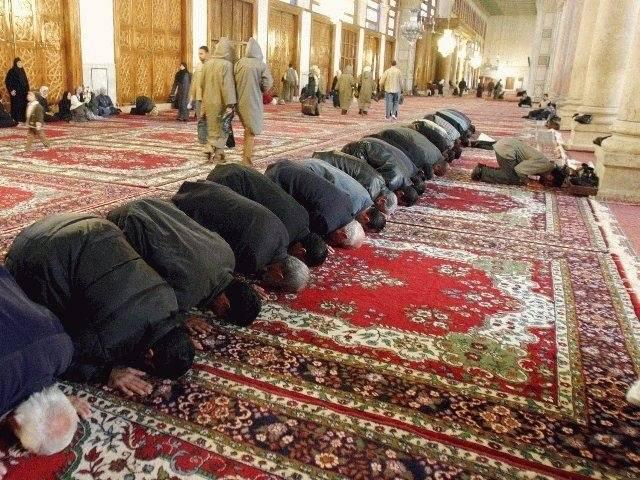Citing “possible violence,” Venetian officials recently ordered the closure of Christoph Büchel's artwork The Mosque: The First Mosque in the Historic City of Venice, which was part of the 56th Venice Biennale (running from May 9th until November 22nd).
Büchel had transformed a 10th‑century Catholic Church into a mosque as part of Iceland’s contribution to the Biennale. A video of the work can be seen here. The artist claimed that the purpose of the installation was to call attention to the lack of a mosque in Venice, despite the city’s historical connections to the Muslim world.
The Mosque attracted a crowd atypical for an art event: a stream of worshippers who treated it as a regular place of worship. When authorities shut it down, they claimed that Büchel did not obtain the proper permits necessary for establishing a new religious building (Büchel’s attorneys countered that such permits were not necessary because the Mosque is a work of conceptual art, not a place of worship), and that there were security concerns because of “possible violence either by anti-Islamic extremists or Islamic extremists upset that a mosque has been created inside a church.”
So was The Mosque shut down because, as authorities claim, it posed a true security threat? If cartoons of Mohammed can provoke violence, could such a mosque? Or is it part of a dangerous trend of using imaginary threats as an excuse for censorship?
Similar alarming instances of officials citing a threat of violence as a pretext for censoring artwork have cropped up around Europe. In February, at the Pavillon Vendôme in a suburb north of Paris, artist Zoulikha Bouabdellah removed her work Silence after the town council received warnings from a local Muslim group that the exhibit might result in violence. The work consisted of a number of prayer rugs with circles cut out of the center a pair of high heels placed in the empty space. The work sparked controversy and threats because most Muslims consider it disrespectful to step on a prayer mat with shoes.
In an interview with artnet News, Bouabdellah said the reason for her self-censorship was that Clichy officials showed no support for the exhibition and “since we were not supported by the mayor, the guarantor of the French Republic’s principles, I didn’t want to take the responsibility, so we decide [sic] to remove the work.” A few weeks later, all participating artists in the group exhibit collectively decided to dismantle the show, in solidarity with Bouabdellah.
Also referring to security concerns, the Victoria & Albert Museum in London pulled the image of a poster depicting the Prophet Muhammad from its online catalog in January, just weeks after the attack on Charlie Hebdo. However, the work remained in the museum’s physical collection. While many Muslims object to visual depictions of the Prophet, there are plenty of Muslims who do not object to visual images of the Prophet, and the poster was an example of such a belief. The museum claimed it removed the work in light of the fact that it is “a high-profile public building already on a severe security alert.” The decision to self-censor in response to a general feeling of insecurity, in the absence of any concrete or immediate threat, is alarming and excessive.
While cultural institutions like the V&A are chilling expression out of the fear of possible violence, the censorship of the Büchel work suggests how such fears can be exploited to justify shutting down works that authorities simply do not like. The real reason to close Büchel’s The Mosque was very likely the discomfort Venetian authorities felt over having a mosque in the city center. Italy does not have a good track record when it comes to relations with newly emigrated Muslims, and polls show Italians have some of the most unfavorable views towards Muslims in Western Europe. In 2008, the anti-immigrant Northern League party tried to pass a bill through parliament to effectively block the construction of new mosques. Similar bills have passed on a local level as well. Islam is also not officially recognized by the Italian state, even though religions with smaller followings (like Judaism) do receive recognition, and this denies Islamic organizations tax exemptions and other benefits.
The willingness of the Biennale’s curators to allow the closure is thus very disturbing, especially considering the Biennale’s reputation as a stage where the political and social transformations of the day can be confronted.
Security concerns (real or imaginary) should not become an acceptable excuse to censor artistic expression. In cases where threats are real, by not displaying challenging works, curators and government officials allow hecklers to determine which viewpoints are valid and which are not. Yielding to these threats places us on the dangerous path of actually incentivizing more threats in order to have objectionable material removed. Worse, given the effectiveness of even the slightest concern about possible violence, threats of violence can be easily exploited by both governments and citizens to justify censorious actions.


